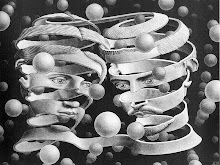I've recently completed a short documentary 'Trafficking in Misery: The Road to Modern Day Slavery" which is going to be used for a conference on sex trafficking held by Advocates 4 Women in New York. I met the activists involved with this cause at the National Organization for Women's Trafficking Action Network, a dedicated team of people from diverse backgrounds who are raising awareness of this issue. I was shocked to find that federal legislation against human trafficking was only enacted in the year 2000 and that New York state has only recently enacted anti-trafficking laws in 2007.
The individual stories of the victims are heartwrenching and brutal, most people are unaware of the scope of this problem and how these people exist all around us yet their plight is almost invisible due to lack of awareness. When we do hear of such crimes we somehow perceive this to be an exagerration when it is in fact a brutal reality. One activist discovered the truth after finding his favorite Asian restaurant on the front cover of his local paper, uncovered as a labor trafficking ring. Most people do not know what signs to look for in a victim or who to contact when they suspect this activity, an issue which must be addressed by more educational campaigns. Before the recent legislation came into effect the victim was more likely to get arrested than the trafficker who was exploiting them, another reason why people may be reluctant to report this crime.
A couple of hundred years ago a slave could be purchased for the modern day equivalent of $40,000 but today a human can be purchased for $300 and net a trafficker up to $67,000 per year in profit, the victims effectively become 'disposable people' who are easily replacable and very likely to be killed if they become difficult to manage. Criminals operate with impunity around the world due to lack of awareness and legislation; shockingly the United Nations has been allocated only $50 million dollars per year to combat this multi-billion dollar industry. NGOs estimate that 27 million people per year are in modern day slavery but due to the limited resources they have to investigate the problem this may be only the tip of the iceberg.
A young activist I met at an Amnesty meeting in West Harlem once asked "what is it that happens in the time between when someone is a little boy and a man that would allow him to perpetrate such brutality?" It brought me back to Hannah Arendts assessment of the banality of evil which in this case may be more aptly termed the casualness of psychopathy; these crimes are profit driven and those who commit them see their victims as less than human which in their twisted thinking somehow makes this acceptable. Like Eichmann, who showed no trace of hatred for Jewish people and had wanted only to advance his career the people who perpetrate these crimes operate on the same mechanical level where brutality is the norm and the people they victimise are not assigned personhood.
The uncounted numbers in the human trafficking statistics also cover the recently reported white collar sex trafficking connected to private defence companies, first discovered by NGOs after a report from a brothel client who overheard another one say "mine couldn't have been more than 12" after engaging in sex with a minor. In countries such as Iraq such establishments are often disguised as hair dressers, restaurants, shops and other seemingly mundane places which operate as fronts; the victims are estimated to be in the tens of thousands. Children and women who are trafficked in these types of societies face the additional stigma of compromised chastity in which the victim is blamed, which makes it a very difficult issue to monitor and address.
The psychological condition that is created in women who have been victims of this crime from an early age can make it difficult to identify them as victims of trafficking. Often they have resigned themselves to this life because the person who trafficked them has brainwashed them into believing they will not be accepted back home and the combination of prolonged psychological and physical abuse eventually leads them to be compliant even when they are no longer held captive. I was once a proponent of the Dutch system which allows legal prostitution in designated areas because my relatives in the Netherlands told me there was a sharp decrease in rapes and other types of crime in residential areas when this was implemented many decades ago; it seemed to be a logical system. It is only recently that extensive studies of sex workers have shown that a majority of them have been subjected to childhood sexual abuse, perhaps with the intention of grooming them for such work. The research also found that the legalisation of brothels in various areas around the world almost always led to a parallel trade in child exploitation, the Swedish model of zero tolerance is based partly on this body of research. Their method of how to deal with the problem also poses a solution that might be adopted by the governments of other countries, it is not the prostitute who is arrested but the client who then gets a big red envelope containing a writ delivered to his home. This makes it a less appealing activity for the potential client and far easier for law enforcement to obtain evidence from victims who have been trafficked.
Now I am going to have some herbal tea and clear my mind. Then onto the second phase of Equanimity Productions which will have it's home at
equanimity.tv in a few weeks, more bite sized documentaries and dramas about human rights issues around the world.
View: 'Trafficking in Human Misery: The Road to Modern Day Slavery' narrated and directed by Naomi Pattirane








